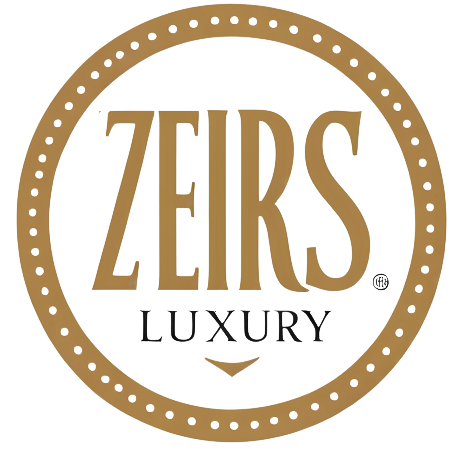
Introduction to Organic Beauty Products
Understanding Organic Beauty
– **Defining Organic Products**: In the realm of skincare, ‘organic’ refers to items composed of natural ingredients from organic farming, where pesticides, synthetic fertilizers, and GMOs are strictly forbidden. These products align closely with health-conscious living.
– **Safety and Benefits**: Consumers are consistently opting for beauty products that promise safety alongside efficiency. This trend stems from a growing awareness of the potential side effects associated with chemicals commonly found in traditional cosmetics.
– **Consumer Expectations**: Today’s beauty enthusiasts are not just looking for products that enhance their appearance temporarily. There’s a clear expectation for skincare items to support overall well-being, often seeking out beauty products with additional medicinal properties.
The Rise of Organic Skincare
– **Market Growth**: The beauty industry has observed a significant increase in demand for organic skincare products. This boom isn’t confined to one region but is a global phenomenon, indicating a universal shift in consumer preferences.
– **Emergence of Indie Brands**: Small, independently owned companies, dubbed as indie brands, are carving a niche for themselves by offering unique organic and natural cosmetic options. Their growth is a testament to the increasing consumer desire for authentic and transparent beauty solutions.
– **E-Commerce Advantage**: The indie brands making substantial headway are those who have mastered the art of online retail. With the click of a button, these products are reaching doorsteps worldwide, which speaks volumes for their growing accessibility and popularity.
– **Innovation and Connectivity**: A key factor attributing to the success of indie brands is their commitment to innovation and a strong connection with their customer base. These brands often engage consumers directly, fostering a sense of community and loyalty.
– **Health Equals Beauty**: The boundary between health and beauty products is blurring. Present-day consumers often equate good health to beauty, preferring products that are gentle and derive their efficacy from nature, rather than harsh chemicals.
– **Ancient Wisdom Modernized**: An interesting trend in the organic beauty market is the revival of ancient practices such as Ayurveda and Traditional Chinese Medicine (TCM). These time-honored wellness traditions are influencing product formulations, providing users with a holistic approach to skincare.
The organic beauty market, fueled by the meteoric rise of indie brands and an unwavering commitment to natural ingredients, is a clear reflection of the evolving consumer ethos. Health-conscious beauty enthusiasts are driving a market shift towards products that not only make them look good but feel good in a wholesome, natural way.
The Historical Context of Organic Beauty
As someone immersed in the world of organic beauty, I want to shed some light on the historical background that has set the stage for the current organic skincare renaissance. The roots of this movement aren’t a part of a passing trend, but rather a result of reverting to age-old traditional practices that resonate with modern sensibilities, and of a collective shift in mindset that started in the 20th century.
Ancient Practices and Ingredients
In looking at the past, it is clear that the use of natural ingredients in beauty treatments is as old as human civilization itself. Civilizations such as the Egyptians used natural oils and plant extracts for cosmetics and embalming processes. Ancient Ayurvedic practices, originating from India, emphasized the importance of balancing the body, mind, and spirit, including the use of plant-based treatments for skincare. The goal was not solely appearance-based but also about overall well-being. Similarly, Traditional Chinese Medicine introduced botanical ingredients and holistic health into personal care regimens.
The 20th Century and the Shift Towards Organic
Fast forward to the 20th century, when the industrial revolution had fully taken hold, a period when synthetic chemical ingredients became the norm in manufacturing, including beauty products. However, through this century, a shift gradually began to take hold. The environmental movement of the 1960s and 70s awakened a collective consciousness about the impact of these chemicals on both human health and the ecosystem. This period saw the re-emergence of interest in organic and natural ingredients in skincare.
As knowledge became more widely spread and consumers became savvier, the demand for beauty products without harmful chemicals surged. The idea that what is put on the skin is just as important as what is ingested took a front seat. This marked a turning point for the beauty industry, where the emphasis on health aligned with beauty ideals.
The resurgence of interest in Ayurveda and Traditional Chinese Medicine at the beginning of the 21st century is not a coincidence but rather an intersection of renewed interests in traditional knowledge and a profound concern for we impact our health and the environment.
These changes paved the way for the emergence of independently owned and operated brands, known as the indie brands, catering to a market that appreciated small-batch, handcrafted, and sustainable alternatives to mainstream beauty products. The organic beauty market benefitted immensely, riding the wave of this historical evolution. Consumers now demand transparency, efficacy, and ethical sourcing, which indie brands often deliver more expeditly than their larger counterparts. In the modern era, the essence of beauty has come full circle to once again embrace nature – a testament to the enduring wisdom of the past, tailor-made for the informed consumer of today.
The Birth of Organic Beauty Brands
Having examined the historical underpinnings of the organic skincare renaissance, let’s explore the chronological progression that birthed the organic beauty brands, which have now become a cornerstone of the beauty industry. The emergence of these brands trace back to a few pioneering companies that set the standard for what it means to be truly organic in an industry saturated with synthetically-derived ingredients.
France’s Pioneering Organic Skincare Brand in 1972
One of the early trailblazers was a certain French brand, which was established in 1972. While I won’t mention the brand by name, it’s noteworthy for being among the first to introduce a line of skincare products made entirely with natural ingredients and essential oils. At the time, this was revolutionary; the landscape of skincare was dominated by large corporations that favored cost-effective synthetic ingredients. This French brand, however, emphasized ethical sourcing and harnessed the power of nature, becoming a beloved staple among consumers who resonated with its eco-conscious principles long before “going green” was a popular hashtag. Despite skepticism and a market accustomed to conventional beauty brands, their persistence laid a foundation for the industry that followed.
Organic Certification and Industry Standards
Evolving from those early impromptus, the need for regulated industry standards became apparent, resulting in the development of organic certification for beauty products. This was a monumental step in legitimizing the market and assuring consumers of the genuineness of products labeled as ‘organic’. Today’s industry standards often require that a certain percentage of ingredients are derived from organic farming, which reassures consumers of a product’s authenticity and ecological footprint. Moreover, these certifications also emphasize ethical sourcing and production practices. For instance, companies are not only discouraged from using synthetic chemicals but are also encouraged to prioritize fair trade, and cruelty-free methods, all of which resonate with today’s consumers who look for transparency and ethical responsibility in their beauty products.
As a participant in this evolving market, what struck me is the dynamism of the organic beauty industry. Brands have not only innovated in the realm of ingredients and sourcing, but also in terms of packaging, marketing, and community engagement. The interconnectedness of the brand with its consumers through social media platforms and e-commerce has redefined industry-consumer relations, making them more intimate and accessible. Indie brands, with their nimble structures and quick adaptability, have been central in this regard, effectively solving problems and catering to niche demands.
Crucial to this evolution is the entrepreneur’s spirit of innovation, which has been pivotal in propelling independent brands to the forefront of the organic movement. They’ve defied the odds, often working with limited resources to bring high-quality, environmentally conscious products to the market. Their success stories are indicative of a growing trend towards natural beauty, sustainability, and a return to the holistic wellness practices of yore – a blend that seems to uniquely satisfy the modern consumer.
This profound shift has united historical traditions with contemporary values, resulting in an industry that not only beautifies but also heals and nurtures in the most organic sense. As this market continues to expand, it symbolizes a beauty revolution where wellness and environmentalism are intertwined, signaling a brighter, cleaner future in cosmetics.
Organic Skincare Ingredients
I’d like to dive further into the specifics of what defines the core of organic skincare products, as their ingredients are pivotal to their effectiveness and allure in the market. These ingredients are diligently sourced and often steeped in traditional uses, delivering not just cosmetic benefits but holistic wellbeing.
Botanical Sources for Organic Products
For me, the heart of organic skincare lies in the rich array of botanicals used. These plant-based ingredients are carefully selected for their skin-nourishing properties. As someone who values the traditional aspects of skincare, I’ve been particularly interested in how these botanicals are grown, harvested, and incorporated into beauty products. Aloe vera, for example, has been a go-to for soothing and hydrating skin, and its uses date back to ancient Egypt. Today, it’s a common ingredient in organic skincare, revered for the same moisturizing and healing benefits.
– **Tea tree oil**: Known for its antiseptic properties, tea tree oil is a staple in acne treatments.
– **Lavender**: Not only admired for its calming scent but also for its ability to reduce inflammation and aid in skin healing.
– **Chamomile**: Rich in antioxidants, chamomile is another soothing agent, excellent for sensitive skin types.
– **Rosehip oil**: Bursting with vitamins and essential fatty acids, it promotes skin regeneration and improves flexibility.
These are merely a snapshot of the array of botanical ingredients that contribute to the harmonious balance between beauty, health, and nature that organic skincare strives to achieve.
Minerals and Their Role in Organic Formulations
Switching focus from botanicals, minerals are another foundation to the organic skincare edifice. They are critical in formulating products such as sunscreens, where ingredients like zinc oxide serve not only as reflectors of harmful UV rays but also possess skin healing and anti-inflammatory properties.
– **Dead Sea salts**: These salts have been used for centuries for their therapeutic properties and are excellent for exfoliation and promoting skin hydration.
– **Kaolin clay**: Often found in masks, it gently detoxifies by drawing out impurities from the pores.
– **Sulfur**: Perhaps less talked about, sulfur is effective at combatting acne due to its antibacterial qualities.
The delicate interplay between various natural components can’t be underestimated. As someone who has been a part of the organic skincare community, I’ve witnessed the stringent standards that these products meet to ensure they are truly organic. The unrefined, non-synthetic ingredients in organic skincare products echo a deeper philosophical approach towards beauty, centering on environmental sustainability and a toxin-free lifestyle..
It’s these elements – the botanicals, the minerals, and the values behind them – that meld together to create not just a product, but a potent representation of a growing ideology. They embody a synergy of healthful living and environmental responsibility that’s at the core of the organic beauty movement.
Consumer Demand and Market Growth
The New Age Consumer and Sustainability
As a participant in the organic skincare market, I have noted a seismic shift in consumer preferences. They are not just leaning towards products that enhance their beauty; they are equally concerned about the health implications and the environmental impact of their choices. Here are some of the changing consumer behaviors and values:
– **Preference for Natural Ingredients**: There’s an observable surge in the demand for products with natural ingredients. Consumers are more knowledgeable and often scrutinize product labels for harmful chemicals.
– **Eco-Consciousness**: Environmentally-friendly products are being championed by consumers, who are now more aware of their ecological footprint.
– **Holistic Health Approach**: Skincare is increasingly being aligned with overall wellness rather than mere appearance. This trend is transparency in the sourcing and manufacturing processes.
– **Customization and Personalization**: There’s an uptick in individualization when it comes to skincare routines, which indie brands are particularly adept at providing.
– **Support for Indie Brands**: Consumers are leaning towards supporting smaller, independent brands that focus on niche markets and personalized experiences.
Through direct interaction and feedback loops with customers, it’s clear that these values are shaping the future landscape of the skincare industry. The principles of sustainability and wellness are becoming essential benchmarks for product success.
Market Statistics and Growth Patterns
Various market analyses convey the burgeoning trajectory of the organic skincare market. The data speaks to the strength of e-commerce and the organic beauty industry:
– **E-commerce Strength**: Online channels are principal drivers of sales for organic skincare. Accessibility to a global marketplace has bolstered the growth of countless beauty brands.
– **Surge in Indie Brands**: A considerable part of the market’s expansion comes from the innovative indie brands sector. The agility and creative approach of these smaller entities have solidified their market presence.
– **Market Growth Forecasts**: Projections suggest a consistent upward growth pattern. The compound annual growth rate (CAGR) for organic skincare is robust, compared to the overall beauty industry.
– **Global Trend Adoption**: Organic skincare is not region-specific; it’s experiencing a worldwide adoption, signaling a universal shift towards natural, health-oriented beauty products.
As I analyze this data, I am struck by the potential it shows for future innovation in product development and marketing strategies. The data underpins the importance of aligning with consumer ideology and utilizing digital platforms for brand exposure and sales. This intersection of trends and the pivot towards e-commerce have indeed established a fertile ground for growth and expansion in the organic skincare domain.
The PinkReport™ and Industry Evolution
The organic beauty market, specifically the organic skincare sector, has experienced a significant transformation in recent years, characterized by rapid growth and diversification. Through my involvement as a Senior Consultant and Senior Manager in Business Research and Advisory in the beauty industry, I’ve had the opportunity to observe firsthand the evolution of this market niche.
Key Insights from The New Age of Naturals
As we’ve moved through different phases of cosmetic development, natural ingredients have persisted, but the emerging trend of indie brands has reshaped the landscape:
– **Innovation, Authenticity, and Transparency**: Indie brands have propelled advancements in the industry by focusing on solving skin problems with innovative approaches, often emphasized by their transparency and authenticity.
– **Community and Connectivity**: These brands have cultivated strong communities and forged deep connections with consumers, who in turn become loyal champions for their favorite indie products.
– **Investor Confidence**: Seeing robust returns and continued consumer interest, investors are increasingly fueling these smaller, agile brands, which contributes to a dynamic and competitive market.
– **Sustainability**: Organic skincare brands often uphold strong values of sustainability and environmental responsibility, resonating deeply with a growing eco-conscious consumer base.
These emerging themes reinforce the importance of the indie and organic movement within the broader beauty context. It is a shift towards not only what is in our skincare but how and by whom it is made.
How Organic Beauty Products Have Transformed
The transformation of the organic beauty market is evident in several facets of product development and consumer behavior:
– **From Niche to Mainstream**: Organic beauty products, once a niche market, are now mainstream, with major players and indie brands alike vying for market share.
– **Quality and Efficacy**: There has been an increased emphasis on the quality and effectiveness of organic products. With competition rife, brands must prove that their natural formulations can perform as well as, if not better than, conventional options.
– **Consumer Education**: Today’s consumer is knowledgeable about what goes into their skincare. Brands have responded by being more educational and upfront about their ingredient sourcing and manufacturing processes.
– **Regulations and Certifications**: With the organic market’s growth, there has been a rise in regulatory oversight and certifications designed to protect consumers and ensure the legitimacy of organic claims.
The organic skincare market’s trajectory is shaped by an interaction of these factors, contributing to the richness and complexity of this sector. As both a researcher and an industry professional, I’ve witnessed how these changes are not just reshaping brands and their strategies but are also rewriting consumer narratives around beauty, health, and wellness. Through this intersection of factors, the organic beauty market is indeed flourishing, marking a new chapter in the history of skincare that promises to be as vibrant as it is natural.
Green and Social Considerations
Addressing the green and social considerations is key to understanding the comprehensive impact of the organic beauty market’s expansion. These factors outline the broader implications for the environment and communities associated with this burgeoning sector.
Environmental Impact of Organic Beauty
The environmental lens sheds light on significant shifts I’ve perceived in the industry’s production and consumption patterns:
– **Eco-Friendly Packaging**: As a beauty industry advisor, I’ve seen a substantial move towards biodegradable, recyclable, and minimal packaging among both indie and established organic beauty brands, aimed at reducing pollution and waste.
– **Sustainable Sourcing**: Brands are increasingly committed to ethical sourcing. These practices emphasize the protection of ecosystems and biodiversity and, in many cases, support the advancement of green technology in ingredient extraction and harvesting.
– **Reduced Carbon Footprint**: There is a growing expectation for brands to calculate and actively work to reduce their carbon footprint. This extends from manufacturing processes to transportation and distribution.
– **Natural Resource Conservation**: Water conservation and using renewable energy sources are becoming staples in the operational processes of many organic skincare companies. This focus contributes to conserving vital natural resources and reducing overall environmental impact.
In my professional experience, while many brands proclaim environmental friendliness, the challenge lies in maintaining transparency and ongoing commitment to truly sustainable practices.
Social Responsibility in the Beauty Industry
The social paradigms within the beauty industry have been equally transformative:
– **Fair Trade and Ethical Labor Practices**: Acknowledging the role of fair trade and ethical labor practices, organic beauty brands often highlight their commitment to responsible sourcing. This not only includes fair compensation but also ensuring safe and healthy working conditions for their workers.
– **Community Engagement**: Many indie brands have embedded community engagement into their DNA, often supporting social causes, local economies, and education initiatives. This approach can foster brand loyalty and reflect positively on consumer perception.
– **Diverse and Inclusive Representation**: Today’s beauty industry is recognizing the importance of representation. Whether through advertising, product development, or corporate leadership, inclusive practices are increasingly prevalent in the organic skincare market.
– **Empowerment through Education**: By educating consumers about the sources of their ingredients and the benefits of organic skincare, brands are empowering individuals to make informed decisions that align with their personal values and health considerations.
As contributors to this industry, we are tasked with not only driving growth but also being stewards of responsible practices that uphold the principles of environmental sustainability and social equity. It’s a compelling journey, one that has essentially redefined beauty as a force for positive change and enlightened consumerism.
The New Breed of Organic Beauty Products
In my role within the beauty industry, the surge in the organic beauty market has been both remarkable and encouraging. My engagements with clients, beauty experts, and product innovators have revealed a shared enthusiasm for this transformation—a shift towards healthier, more sustainable beauty solutions.
What Defines the Emerging Organic Beauty Products
A new breed of organic beauty products is redefining what consumers can expect from their skincare and beauty routines. Several defining characteristics typify this trend:
– **Ingredient Integrity**: The hallmark of these products is their commitment to high-quality, organic ingredients. Gone are the days of filler substances; every ingredient is meticulously chosen for its skin benefits and ecological footprint.
– **Holistic Wellness**: There is no longer a distinct line between health and beauty. Organic products are bridging this gap by delivering skincare benefits that align with the users’ overall wellness goals.
– **Inclusivity**: Formulations are more inclusive, considering a diverse range of skin types and conditions. The emphasis on universal wellness has opened doors for products that cater to previously overlooked demographics.
– **Tech-driven Personalization**: Advances in technology allow for hyper-personalized skincare solutions that match individual needs, a move away from the one-size-fits-all approach of traditional beauty brands.
Exploring the offerings in the organic sector, I’ve consulted for brands that are pushing the envelope in terms of product innovation, showing that organic can also mean high-tech and cutting-edge.
How ‘Organic’ is Redefining Beauty Standards
The organic movement is not just about creating new products; it’s about fostering a new understanding of beauty standards. Here’s how:
– **Clean Beauty**: The term ‘clean beauty’ has emerged as a significant standard, synonymous with safety, transparency, and ecological responsibility. As an advisor, I emphasize to brands that this is what consumers are demanding.
– **Back to Roots**: There’s a revival of ancient beauty wisdom from traditions like Ayurveda and Chinese medicine, proving that historical practices also have a place in modern beauty regimes.
– **Certification and Trust**: Organic beauty is not just a label; it’s a promise to the consumer. My work frequently involves guiding brands through obtaining certifications that validate their organic claims, building trust and loyalty among their users.
As we analyze market data and consumer trends, it becomes clear that the organic beauty market is not merely riding the wave of a trend but is at the forefront of a profound shift in the beauty industry. In my research, I consistently find that consumers are no longer passive purchasers but informed participants seeking to align their beauty choices with their values. Brands that can meet this expectation are finding success, while also contributing positively to the well-being of both their consumers and the planet.
The Rise of Indie Brands in the Organic Beauty Market
The organic beauty market is showcasing unparalleled growth, a testament to changing consumer values and a deeper understanding of health and wellness. Independent brands, or ‘indie’ brands, have emerged as forerunners in this space, captivating a segment of the market hungry for authenticity, individuality, and environmental responsibility. Through my consulting work, it’s evident that these indie brands have a unique capacity for swift innovation and consumer connection.
Indie Brands: Harnessing E-commerce and Innovation
– **Direct-to-Consumer Model**: Many indie brands exploit the potency of direct sales models, primarily through e-commerce channels. This not only reduces overhead costs but fosters a direct dialogue with consumers.
– **Agile Development**: Smaller, independent brands can quickly respond to market trends and consumer feedback, allowing them to refine or introduce products with agility unheard of in larger corporations.
– **Community Building**: Indie brands often excel at creating vibrant communities around their products. Leveraging social media, they can create an ecosystem of brand evangelists.
In my collaborations with these brands, I’ve observed the passion and drive of their founders and how this translates into innovative products and impactful brands.
Driving Forces Behind the Organic Skincare Trend
Classifying the key drivers for the rising popularity of organic skincare, the following trends have emerged prominently:
– **Health Equals Beauty**: This is a pivotal trend where consumers view their skincare regimen as part of their health routine, thus favoring products with natural ingredients and medicinal properties.
– **Rise of Traditional Wisdom**: Cultural heritage is making a significant comeback. My involvement with brands often includes integrating traditional practices into product narratives, which resonates deeply with consumers.
– **Digital Connectivity and Awareness**: As a consultant, I emphasize the importance of digital presence. It’s clear that informed consumers are spending more time online researching products, demanding transparency, and connecting with brands that share their values.
These trends are direct responses to a more discerning consumer base that holds brands to higher standards, not just in terms of product quality, but also corporate integrity and environmental impact. Brands thriving in this competitive landscape are those that understand and embody these values in their business model and product offerings.
The indie brand segment within the organic beauty market is a vibrant and rapidly evolving space, with a clear trajectory towards continued growth and innovation. In my professional engagements, I aim to align these brands with evolving market dynamics to support their growth and ensure they resonate with conscious consumers who are seeking more from the products they choose to incorporate into their lives.
















